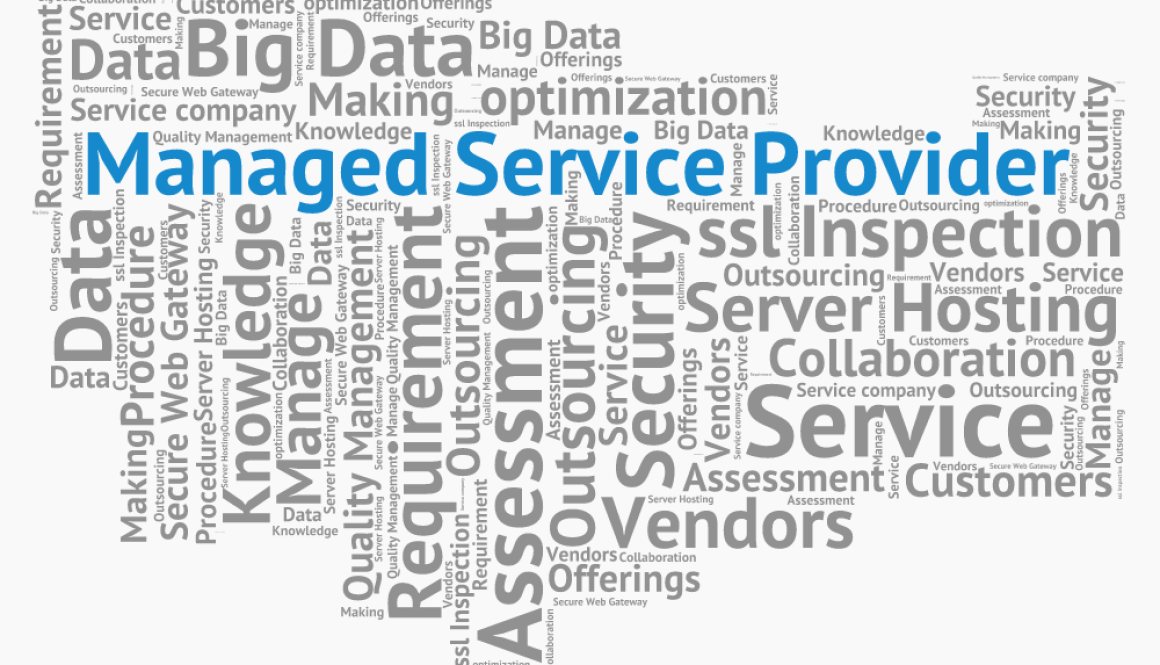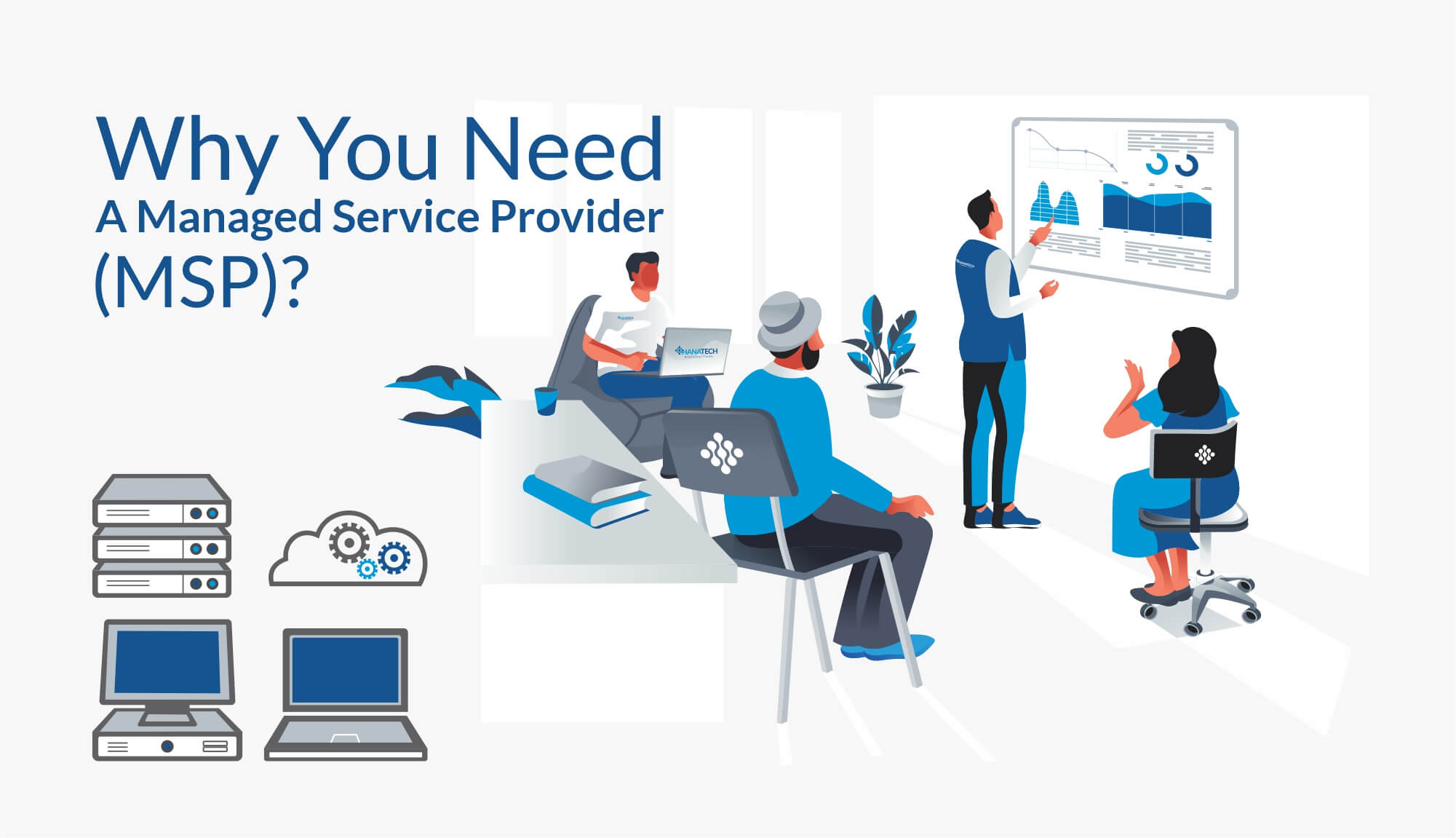
Cloud based service




How an MSP Strengthens Your Business’s Cybersecurity Posture

Cybersecurity is no longer optional—it’s a necessity. With threats like ransomware, phishing, and data breaches on the rise, businesses must take a proactive approach to security. But should you handle cybersecurity in-house or partner with a Managed Service Provider (MSP)?
1. Do You Have the Budget for an In-House Cybersecurity Team?
Hiring and maintaining an in-house cybersecurity team requires significant investment in salaries, training, and cutting-edge security tools. MSPs provide enterprise-grade security at a predictable cost, making cybersecurity more affordable without sacrificing quality.
2. Can Your Business Handle 24/7 Threat Monitoring?
Cyber threats don’t follow business hours. If your company lacks the resources for round-the-clock monitoring and rapid incident response, an MSP ensures constant protection, identifying and stopping threats before they escalate.
3. Are You Prepared for Compliance & Regulatory Requirements?
Industries such as finance, healthcare, and e-commerce must follow strict cybersecurity regulations (e.g., GDPR, HIPAA, PCI-DSS). MSPs specialize in compliance management, ensuring your business meets legal requirements and avoids costly fines.
4. Do You Have the Right Security Tools & Expertise?
Cybercriminals continuously evolve their tactics, and keeping up requires advanced security solutions like intrusion detection, endpoint protection, and AI-driven threat analysis. MSPs provide access to top-tier security tools and skilled experts without the overhead of purchasing and managing them yourself.
5. How Fast Can You Recover from a Cyberattack?
A cyberattack can lead to data loss, system downtime, and reputational damage. MSPs offer disaster recovery and backup solutions, ensuring your business can quickly restore operations and minimize losses.

Key Features of an Ideal MSP
- Offer a flexible service model
- Take a shared approach to managed services
- Have a solid strategic relationship with either your solutions or cloud provider
- Have many consultants available
- Offer advanced services
- Utilize remote monitoring and management for proactive maintenance
- Have a solid backup and disaster recovery strategy
- Have an established escalation path and provide a secondary contact
- Work with your legal team to address compliance issues
The Bottom Line
If your business lacks the budget, expertise, or resources for comprehensive cybersecurity, partnering with an MSP is the smart choice. By outsourcing cybersecurity to professionals, you get 24/7 protection, cost savings, compliance support, and peace of mind, allowing you to focus on growing your business. As cyber threats continue to rise, investing in an MSP is a strategic move that enhances your cybersecurity posture, compliance, and peace of mind.
🚀 Stay Secure. Stay Ahead. Consider an MSP Today! 🚀
Ready to enhance your cybersecurity posture?
🔹Contact Applied Technology today and take the first step towards a more secure future! 🔹

MSP’s to Enhance Business Efficiencies
A Managed Service Provider is a company that offers a range of IT services to businesses on an ongoing basis.
Instead of handling IT tasks in-house, companies outsource their IT needs to an MSP who will proactively manage and support their systems, networks, and technologies. MSPs typically offer services like network management, cybersecurity, data backups, cloud services, helpdesk support, and system monitoring.

Here’s how an MSP can enhance your business:
- Cost Savings: MSPs provide affordable IT services with a predictable monthly fee, avoiding the need for an in-house team.
- Expertise: Access to specialized knowledge and advanced tools without hiring or training staff.
- Proactive Monitoring: Continuous system monitoring to prevent downtime and resolve issues before they escalate.
- Scalability: Services can easily grow with your business, adapting to new needs.
- Cybersecurity: Robust protection against cyber threats, ensuring data security.
- Focus on Core Business: Free up internal resources to focus on strategic goals instead of tech issues.
- Disaster Recovery: Backup systems and recovery plans to minimize data loss and downtime.
How Using an MSP Works for Your Business:
When you partner with an MSP, they first assess your current IT setup and identify areas for improvement. They’ll then implement tailored solutions to fit your specific business needs. Ongoing support and maintenance are part of the package, so you don’t have to worry about tech issues disrupting your operations. With a dedicated team managing your IT, your business can run more efficiently, securely, and without the stress of dealing with tech problems. The MSP acts as an extension of your business, providing continuous support to help your company grow and evolve.
Overall Statement:
By leveraging the expertise of an MSP, businesses can offload their IT management, ensuring systems are secure, up-to-date, and running smoothly. This allows them to focus on growth and innovation, rather than getting bogged down by technical challenges, leading to increased productivity, reduced risks, and long-term success.
Ready to take your business to the next level?
Let us handle the tech while you focus on what you do best. Reach out to us today at sales@atgfw.com or call 260-482-2844.
We’re here to help you grow!

Cloud Etiquette 101
Cloud Services: Part 3
Horrible house guests, we’ve all had them. Whether it’s that annoying family member that overstays their welcome, or that old college buddy that leaves potato chip crumbs all over your couch. If you thought that was bad etiquette, you’ve yet to see the worst…
Imagine coming into the office and finding that your current work has gone missing, your valuable data has been completely disorganized and all your important files have been put in the trash. What would you do? I’m not referring to your paper trail, I am talking about what most businesses today share – the cloud.
Cloud computing, particularly file-sharing, has its own essential and unwritten code of ethics. No one appreciates an ill-mannered cloud partner. For those reasons we have put together a few etiquette tips to help you not overstay your welcome when utilizing the cloud.
Rule #1: Make Your Names Clear and Concise. Be as specific as possible when naming a file or a folder so that everyone sharing it has a good idea of the contents without having to dig into the file itself. When you’re creating sharable folders, name them about the project, rather than the people involved, so your colleagues don’t end up with a bunch of folders in their repository all carrying their name. Consider creating a specific file-naming convention that your business uses and every employee understands to avoid any confusion.
Rule #2: Ask before you delete! When deleting from the cloud, the files aren’t just deleted from your computer – they’re deleted from everyone’s computer sharing that file. Make sure to never delete files or folders without asking. Better yet, don’t delete anything that you didn’t create yourself. You may think that you’re clearing up some extra clutter, while in reality you’ve just killed the report your officemate has spent hours creating. If you do happen to delete something you shouldn’t, you typically have about 30 days (depending on software) to recover the file. After that, you’re on your own to deal with the missing data and any angry glances your coworkers shoot your way.
Rule #3: Size Matters. Be aware of the size of your files. Don’t add a massive 3 GB mega-file that’s going to take up all of that folder’s storage space. Bear in mind, just because you have unlimited storage, does not mean everyone you’re working with does. Also, be sure to keep your data organized to avoid annoying others with unnecessary clutter. Do you have a habit of creating and sharing a bunch of notes that lead to a final project? Go ahead and delete those notes after the project’s completion, but ONLY if you created them. See Rule #2.
Rule #4: Create Clear Permission Protocols. Not everyone in your office should have access to every file. Make sure you have clear rules when it involves sharing. File-sharing willy-nilly is akin to a house guest just handing out all of your clothes to your neighbors with no documentation about who they went to and if they’ll ever be returned. When in doubt, don’t share, unless you’re the owner of a folder or file.
Rule #5: Maintain accountability. Cloud computing works best when there is accountability. Sometimes there will be many individuals working out of the same project. It is important to keep track of who is working on which file and when, so you don’t end up with a bunch of overlapping edits or changes that you have to sort out later. Set out who is responsible for final updates and ultimately responsible for the files themselves.
Working together is the only way we can make #thecloud a better place. Don’t be the person no one wants to share their cloud with. Simply follow these simple etiquette tips.

Transitioning to the Cloud
Cloud Services: Part 2
Are you considering moving your company to the cloud? There are a lot of perks. First, it allows your company to more easily scale up and down based on system needs. When you host software on site, you have to invest wholly in the server required, whether or not you’re utilizing that server fully. If the software is in the cloud, on the other hand, you only have to pay for what you use. Second, you have access, anytime, anywhere you choose to be, which opens up tremendous opportunities for remote work and greater efficiency. Finally, consider security.
Data loss is not a matter of if, it’s a matter of when – and, unfortunately, it happens to every company, big or small. More than half of businesses locate their disaster/backup systems in the same physical location as their primary system – red alert! If you only have one copy of your system’s backup at your office, and your hardware fails or a breach occurs, then a backup is completely useless. In a bit of irony, it turns out that the safest place to be during a storm (whether literal or figurative) is “in the cloud.”
So, let’s say you’ve finally agreed that it’s time to move to the cloud – where do you start?
Here are some recommendations that can help you though the process:
- First off, moving to the cloud doesn’t have to be an all-or-nothing process. Companies that weren’t “born in the cloud,” meaning any company more than a couple years old, need a plan for transitioning to the cloud. Establish the plan, let your data trickle into the cloud and take your time. No need to jump in head first. It is perfectly fine to keep your business operating in a hybrid cloud environment (some items on site, some in the cloud) for as long as you need, perhaps indefinitely.
- Make sure you know your data. Truly understand what is going on before you begin to move your data and applications. Say you’re going to sell your house; you first need to clean and organize your belongings before putting them all away in storage. Same exact concept when it comes to transitioning to the cloud: clean and organize before you store. You may find that while a software works in the cloud, but it experiences extensive lag and downtime. Knowing this before you make a move will significantly reduce frustration.
- Know your options. Public cloud, private cloud or hybrid cloud? Refer to our previous blog, To Cloud, or Not to Cloud, to learn the difference between these types of clouds. How much storage, bandwidth, and support do you want to pay for? Make sure you tailor your cloud service to best fit your company’s needs. What works for someone else might not work for you and vice versa.
- Do your research. Here’s the reality: we have heard and experienced the effects of far too many subpar cloud solution horror stories. Companies that were put up on a half-built cloud solution eventually had to return to their on-premise solutions. With unreliable cloud partners, comes hidden costs such as unexpected fees for the overuse. Choose a reliable provider.
- Define key roles. Who will have access? Who can add, delete, or modify data? What responsibilities belong to who and how will this change with the cloud? It is crucial to know your staff’s access limitations.
- Add encryption. Most cloud service providers offer encryption features such as service-side encryption to manage your encryption keys. Who controls and has access to these encryption keys? What data is being is being encrypted and when? Ultimately, you decide how safe your solution is.
While the road ahead may be tough, with these tips in mind, you can begin moving your business processes to the cloud safely and efficiently with the support of the right IT services team.

To Cloud, or Not to Cloud…
Cloud Services: Part 1
Everyone is talking about cloud computing these days and for good reason. The cloud is revolutionizing how computing power is generated and consumed. Cloud refers to software and services that run on the Internet, instead of locally on your computer. When tech companies say your data is backed up “in the cloud,” it has nothing to do with those white fluffy things in the sky. Your data isn’t actually up in the cosmos or floating around in space. It has a terrestrial home. It’s stored someplace – lots of places, actually – and a network of servers find what you need, when you need it, and deliver it.
Cloud computing, if done properly, can make your business much more efficient. However, a cloud solution is only as good as the quality of the research, the implementation, and the follow-through. So, how do you know if moving your business applications and data to the cloud is the right answer for you? There are few things you need to know about the cloud first.
What exactly is the cloud? This is a tricky question in and of itself. Just like the clouds in the sky, there are many clouds when it comes to technology. In the simplest terms, cloud computing means storing and accessing data and applications over the Internet instead of your computer’s hard drive. It is using a network of computers to store and process information, rather than a single hard drive.
Public vs. Private vs. Hybrid? Not all clouds are the same. You have options with public clouds, private clouds, as well as hybrid clouds. Choosing the right options for your business comes down to the needs and the amount of control you would like to have.
- Public clouds: owned and operated by a third-party cloud service provider, which deliver their computing resources such as servers and storage directly through the Internet. With a public cloud, the hardware and software is owned and managed by the cloud provider. You access these services and manage your account using a web browser.
- Private clouds: unlike the public cloud, the private cloud is used by only one organization. A private cloud is one in which the services and infrastructure are maintained on a private network. Some companies also pay third-party service providers to host their private cloud.
- Hybrid clouds: combine public and private clouds, which allows data and applications to be shared between them. Data and applications can move between public and private clouds as needed, offering better flexibility and more deployment options.
HaaS or Saas? Just like there are different types of clouds, when it comes to cloud computing, there are also different types of cloud services. Most commonly used cloud services fall into two categories: HaaS and SaaS.
- Hardware as a Service, or HaaS, basically refers to leased computing power and equipment from a central provider. The HaaS model is very much like other hardware service-based models. Clients rent or lease, rather than purchase. a provider’s hardware.
- Software as a Service, or SaaS, utilizes the Internet to provide applications to its users, which are managed by a third-party. Unlike HaaS, this is a web-based model where software providers host and maintain the servers and databases eliminating hardware investment costs.
Is it safe and reliable? As mentioned before, cloud computing is the way of the future. We know it is easy and inexpensive – but, is it safe and reliable? What good is saving money and switching to a cloud solution if it will bring additional risks to my business? Most cloud service providers offer encryption features such as service-side encryption to manage your own encryption keys. So, in reality, you ultimately decide how safe your solution is. As far as reliability goes, in many cases, cloud computing can reduce the amount of downtime to seconds. Since there are multiple copies of your data stored all throughout the cloud, there is no single point of failure. Most data can usually be recovered with a simple click of the mouse.
In the end, though, companies shouldn’t make decisions entirely based on what they are comfortable with or what is cheapest. What should be most important is deciding whether or not transitioning into the cloud will work for your business.
To cloud, or not to cloud? The choice is all yours. Do your research and ask the right questions.
